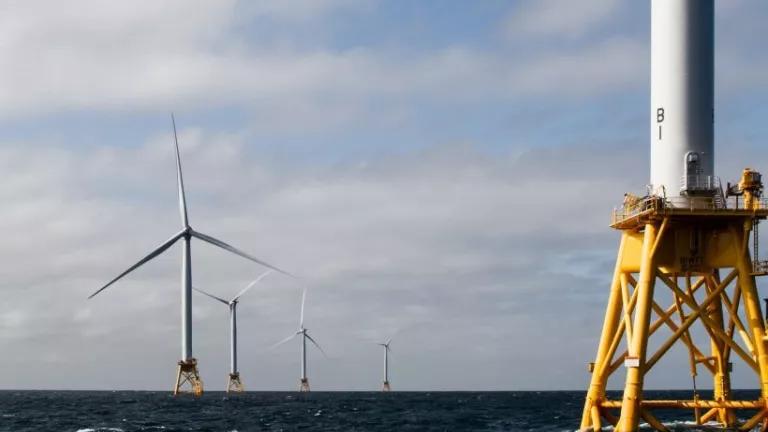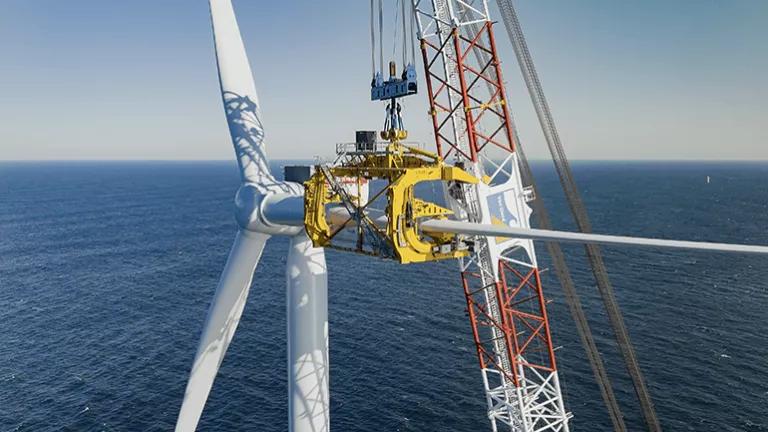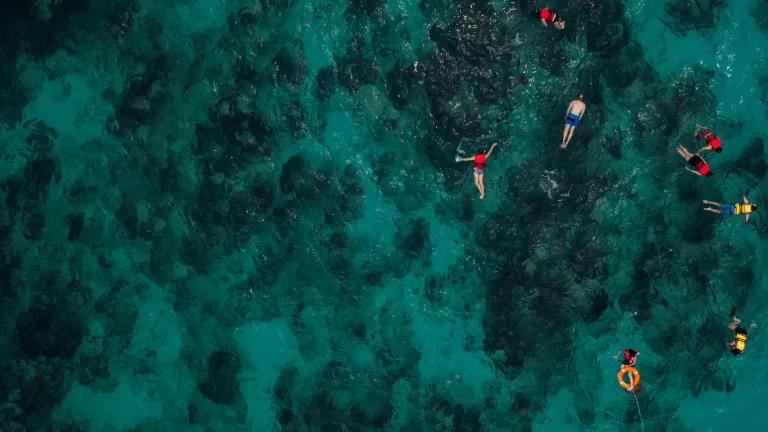Federal Recommendations Support Monitoring for Offshore Wind
A new scientific publication provides recommendations on how to monitor ocean sounds and will help the offshore wind industry advance in a smart way that is protective of the marine environment.

Responsible development of offshore wind energy requires a rigorous scientific monitoring program.
A new scientific publication provides recommendations on how to monitor ocean sounds and will help the offshore wind industry advance in a smart way that is protective of the marine environment.
Offshore wind energy development is now rapidly advancing in all regions of the United States. The rapid growth of this new clean energy industry is essential if we are to avoid the worst impacts of climate change, and the strides forward being taken by the Biden-Harris administration are to be celebrated.
At the same time, offshore wind must be sustainable for the marine environments it uses. The industry is a new one for the United States, and there are still many unanswered questions regarding the effects and potential impacts of development on habitats and species. Carrying out rigorous scientific monitoring studies before, during, and for several years after construction of offshore wind projects will help us understand the nature of any impacts that do occur, will allow us to adaptively manage projects, and will guide future development so that risks are continually reduced.
In October, the National Oceanic and Atmospheric Administration (NOAA) and the Bureau of Ocean Energy Management (BOEM) took an important step in that direction, by jointly publishing minimum recommendations to guide these needed monitoring efforts. Their recommendations for how best to listen for marine wildlife—from the largest whales to economically important species like cod—should be used for monitoring and mitigation during offshore wind energy development.
We can learn a great deal about marine environments just by listening. Life in the ocean uses sound the same way humans use light to see. The ocean is comprised of underwater soundscapes, uniquely characterized by a region’s species, seabed features, weather, and human uses. Listening to these soundscapes (a method known as “passive acoustics”) can help us monitor for any changes in the marine ecosystem that may result from offshore wind energy development.

The new recommendations provide advice on how to choose among the many listening systems that can be used to monitor the marine environment during offshore wind development.
Networks of passive acoustic listening systems deployed over large areas can help us detect if species are using habitat differently in an offshore wind energy area following construction, and this information can help us determine if any observed changes are the result of development activities or some other factor. Listening systems can also help us identify time periods when vulnerable species are present in an offshore wind area in their highest numbers, which can be used to develop time-of-year noise restrictions on highly impactful activities like pile driving. Detections can also help protect species during construction and other noise-producing activities, by helping to flag the presence of animals in “near real-time” so that protective actions can be immediately taken, like delaying the start of pile driving until a vocalizing animal has left the area.
While using passive acoustic listening systems to monitor the marine environment during offshore wind development is incredibly valuable, it is not always clear which technology should be used for a particular monitoring goal, or how a network of systems should be deployed to effectively monitor for changes at a regional scale.
The new recommendations, published in Frontiers of Marine Science, a peer-reviewed scientific journal, answer these important questions. The publication offers a stepwise plan that advises the reader how to: (i) understand the types of sounds produced by species that may be targeted for monitoring, (ii) identify the most appropriate listening system for long-term monitoring versus near real-time applications, (iii) develop a rigorous scientific study design, and (iv) undertake analysis, archiving, reporting, and visualization of the acoustic data once it has been collected.

Recommended locations of passive acoustic listening stations for the New York Bight and Mid-Atlantic region around current wind development areas (colored polygons).
The authors also provide a map of recommended locations that passive acoustic listening systems be deployed off the entire East Coast, to conduct monitoring most effectively for offshore wind energy development. By using this map and adhering at the very least to the minimum recommendations, listening systems being deployed for individual projects can be positioned in a way that can contribute to a broader regional monitoring effort.
In fact, New York State recently announced nearly $1.3 million to support pre-development data collection in the New York Bight to facilitate responsible and cost-effective offshore wind energy development. One of the funding priorities is the establishment of a network of bottom-mounted passive acoustic monitors that will record marine mammal presence within wind energy areas. The map of recommended locations developed by NOAA and BOEM should be used to directly guide the design of this network.
Regional scale development of offshore wind energy requires a regional scale approach to monitoring. We applaud NOAA and BOEM for stepping up to the task of developing practical guidance for passive acoustic monitoring. We regard adherence to these recommendations as an essential element of any responsible offshore wind project, and look forward to seeing them actively used by scientists, NGOs, state agencies, and offshore wind developers. It would be very valuable if similar guidance were developed for visual monitoring, and we hope the federal agencies will play a similar leadership role on this topic in the future.




